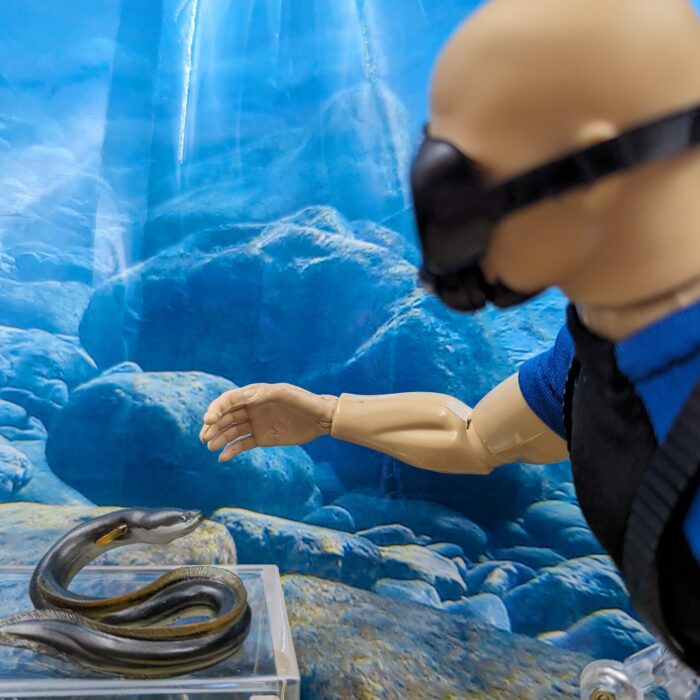This figure is the Japanese eel (nihon unagi in Japan), Anguilla japonica, model sculpt 23 and number 8 from the second series. This is the only freshwater eel found in Japan, although it is found throughout Eastern Asia as far south as Vietnam. Like many other freshwater eels, the Japanese Eel is catadromous, spawning and hatching at sea but living much of their life in freshwater habitats and brackish estuaries.
Classification: Eel & tarpon
Kidako Moray Eel (World Fishing Monster Fish by Takara Tomy A.R.T.S.)

I recently discussed a pair of figures from a Takara Tomy set featuring some unique fish species that are visually or culturally striking. Species that are notable for being scary looking, notorious, and somehow engaging for fishing (I think). I tried to translate the papers and it appears to be called World Fishing Monster Fish, but I can’t be certain.
Saltwater Fish in Colour Part 1, Part 3: The Secrets (Yujin)
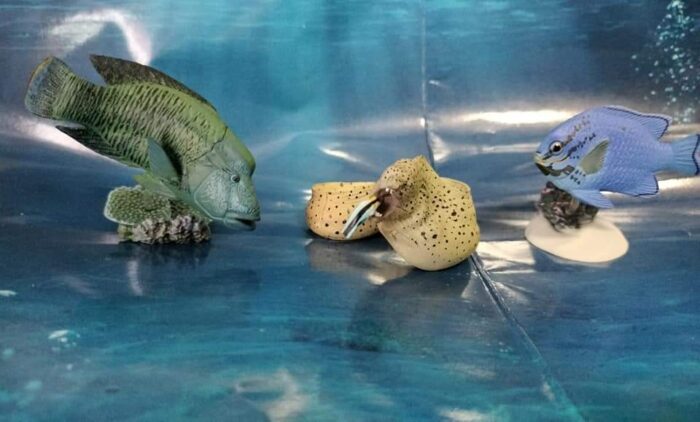
Review and images by JimoAi; edited by bmathison1972
To close off my Yujin Saltwater Fish in Colour Part 1 reviews (see the first parts here and here), I am hereby reviewing the last 3 of the fish; they’re all the secret and chase pieces. Instead of going by numerical numbers, I’ll start from the weakest to the best (in my opinion).
European Animals TOOB (Safari Ltd.)
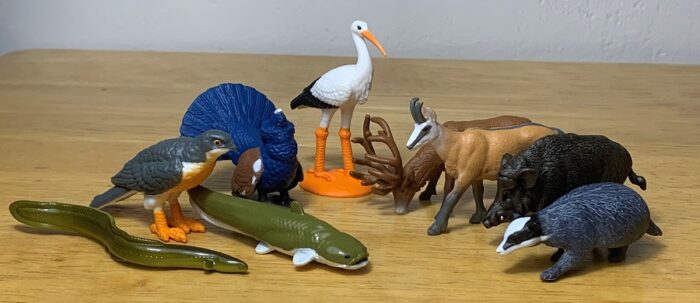
Europe is a continent consisting of the westernmost peninsulas of Eurasia. It is said to be separated from Asia by a variety of natural features including the Ural and Caucasus Mountains, Ural River, and the Caspian and Black seas, among others. Truthfully though, the boarders between Europe and Asia, geological or manmade, are arbitrary.
Gulper Eel (Creatures of the Deep Collection by Safari Ltd.)
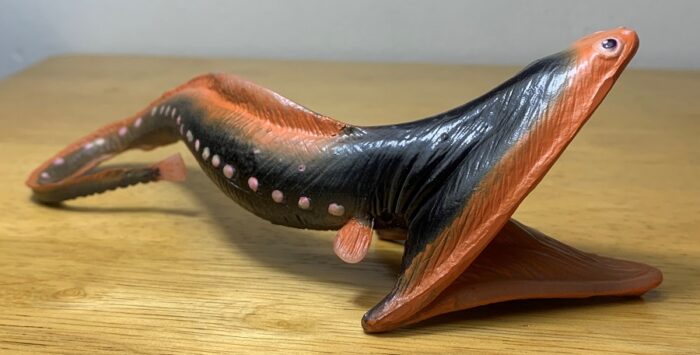
Thanks to its wide, loosely hinged mouth that makes up about a quarter of its total body length, the gulper eel (Eurypharynx pelecanoides) has become a poster child for the deep sea and the bizarre creatures that live there. No surprise then that Safari Ltd. included it in their Creatures of the Deep collection back in 1998.
Kidako Moray (Enoshima Aquarium 3D Atlas Anima Series 2 by Kaiyodo)
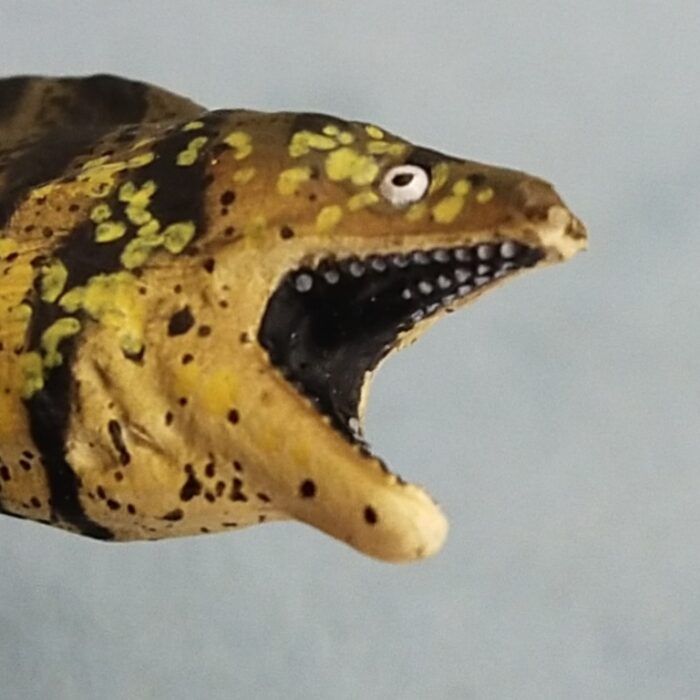
Review and images by JimoAi; edited by bmathison1972
The Kidako moray (Gymnothorax kidako) is a species of moray eel inhabiting coral reefs in subtropical and tropical seas around western to central Ocean Pacific area from Taiwan to Polynesia, including Hawaii, and from south Japan and Korea to New Caledonia.
Leopard Moray (Shinagawa Aquarium by Kaiyodo)
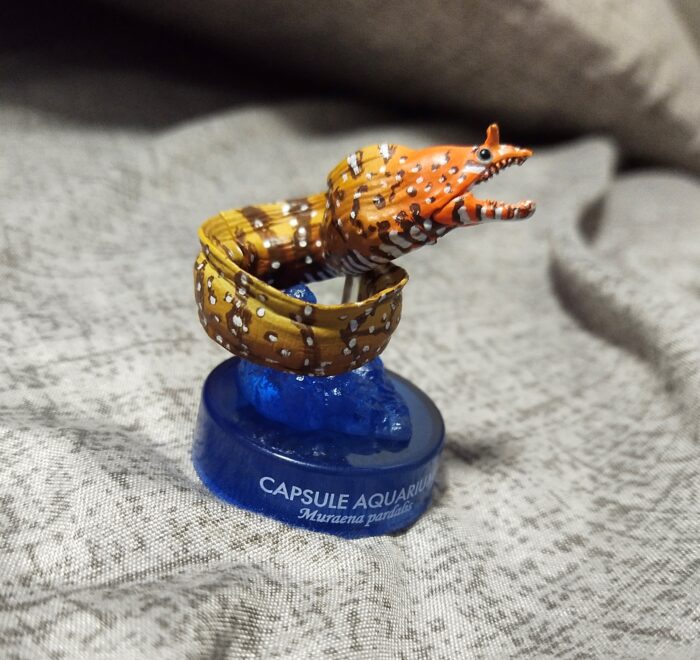
Review and images by JimoAi; edited by bmathison1972
With it’s bright colors of an orange head, mouth lined with narrow teeth used for grasping slippery prey, a brownish body decorated with spots, an ornate pattern, and, to top it all off, a pair of distinctive horn like nostril tubes that gave the fish its name and makes it stand out from the rest of its relatives, the leopard or dragon moray (Enchelycore pardalis) is certainly one of the most distinctive fish on the reef.
Deep Sea Creatures TOOB (Safari Ltd.)
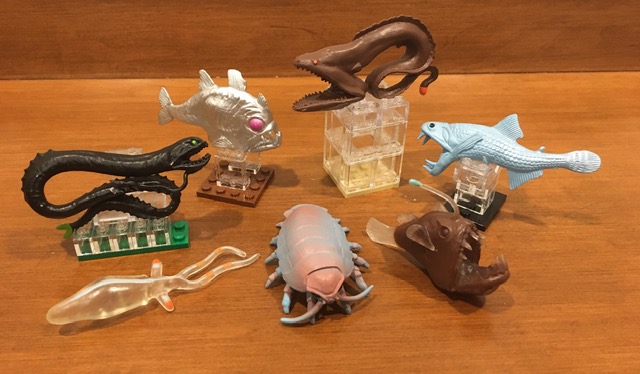
Review and images by Suspsy; edited by bmathison1972
Of all the creatures in the world’s oceans, none are more bizarre and more terrifying to behold than those that dwell in the darkest depths where the light does not penetrate. Seven of these strange species are to be found in the 2014 Deep Sea Creatures TOOB courtesy of Safari Ltd.
Gulf Coast Collection (Toy Fish Factory)

So, after a long hiatus (sorry about that) I have finally gotten myself writing again–and of course it’s fish! Recently the company Toy Fish Factory released two new sets, a Gulf Coast fishes and a Northern Angler set. 2 sets were released previously, the American Angler and River Monsters.
For those who are unaware, I will give a bit of background, and then I’ll discuss each figure in detail–they are all small, and generally wouldn’t warrant a full write up each.

